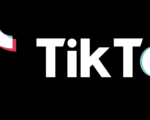Since Louise Joy Brown’s birth in 1978, in vitro fertilization (IVF) has revolutionized infertility treatments, resulting in over 10 million births worldwide. Despite advancements, IVF remains a challenge, with success rates below 50% in many cases. Scientists are exploring cutting-edge methods to enhance these odds, but progress has been incremental.
Current Limitations and Mixed Results
IVF success has improved over decades, with live birth rates for women under 38 tripling since the 1990s. However, the overall live birth rate in the U.S. remains at 45% per embryo transfer. Technologies like time-lapse imaging, though promising, have shown no significant benefit in increasing live birth rates, as evidenced by a July 2024 Lancet study. Despite this, such methods are widely used, often adding considerable cost to patients.
Emerging Innovations in IVF
Researchers are exploring multiple avenues to boost IVF success rates:
- Egg Retrieval Improvements:
A novel needle design by scientists in the UK could improve egg retrieval by inducing fluid motion to capture more eggs. Preliminary tests in cows have shown promise, and human trials are anticipated. - Magnetic Nanoparticles for Egg Handling:
In Spain, researchers have developed a magnet-based technique to manipulate eggs and embryos without physical contact, potentially reducing damage. While promising in animal studies, its efficacy in humans is still unproven. - Embryo Analysis:
In Australia, a method using light to measure lipid levels in embryos could predict metabolic activity, a key factor in embryo viability. This technique remains in early testing phases. - Artificial Intelligence in Drug Optimization:
AI is being used to tailor ovarian stimulation drug doses, aiming to improve egg quality and quantity.
In Vitro Gametogenesis (IVG): A Future Frontier
IVG could revolutionize fertility treatment by generating eggs or sperm from tissue samples like skin cells. This technology might enable same-sex couples, cancer survivors, and even single individuals to have genetically related children. However, ethical and regulatory challenges remain significant, and human applications are years away.
The Reality of IVF
Despite high-tech advancements, IVF is still emotionally and physically taxing, with many cycles ending in failure. Ethical concerns, like the misuse of IVG for unauthorized reproduction, highlight the need for stringent oversight as these technologies develop.
While breakthroughs are rare, small, evidence-based improvements continue to provide hope. IVF, for all its challenges, has already transformed millions of lives. As one patient recently shared with a reproductive specialist, after years of struggle, their baby’s heartbeat on an ultrasound was the culmination of hope and perseverance.










